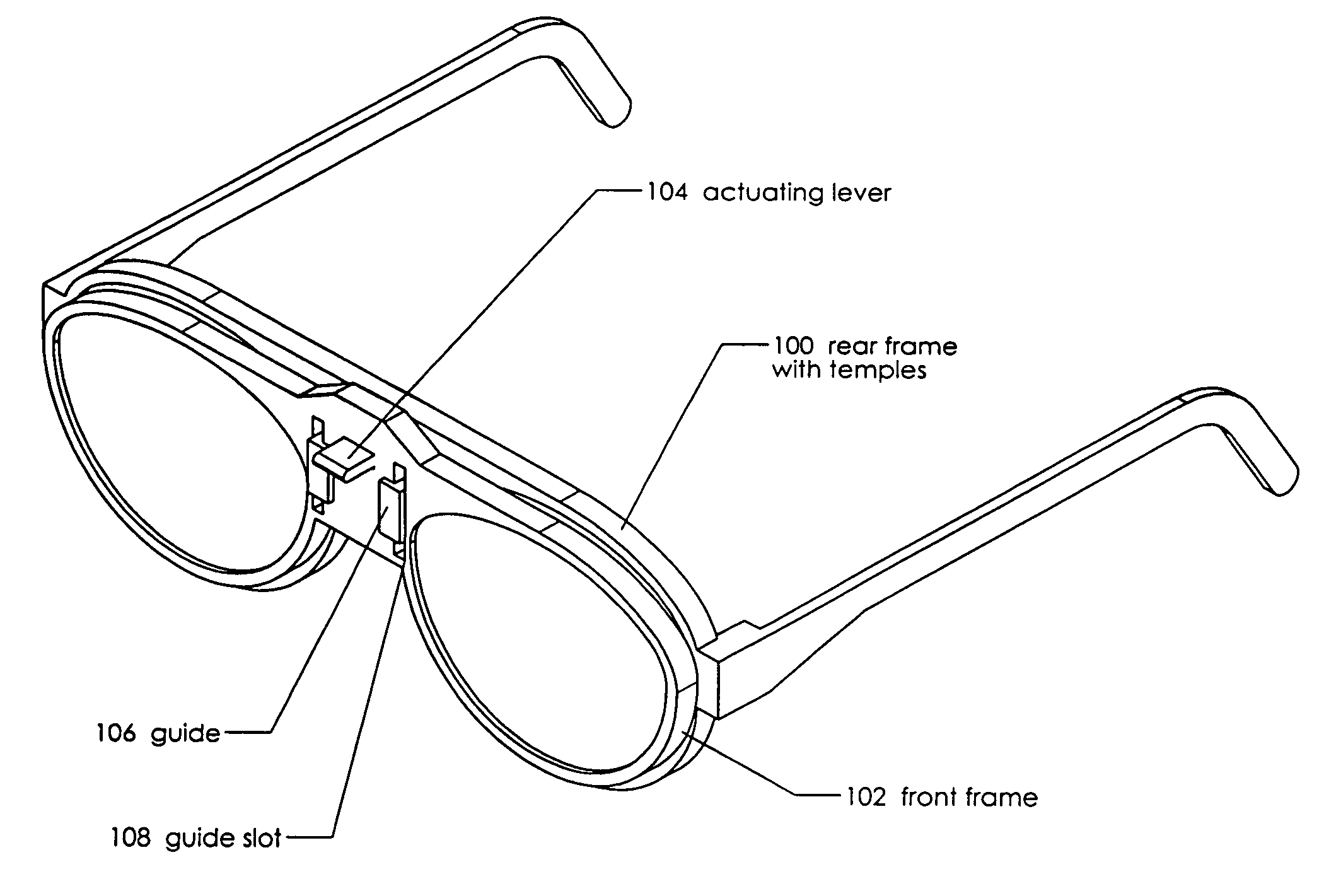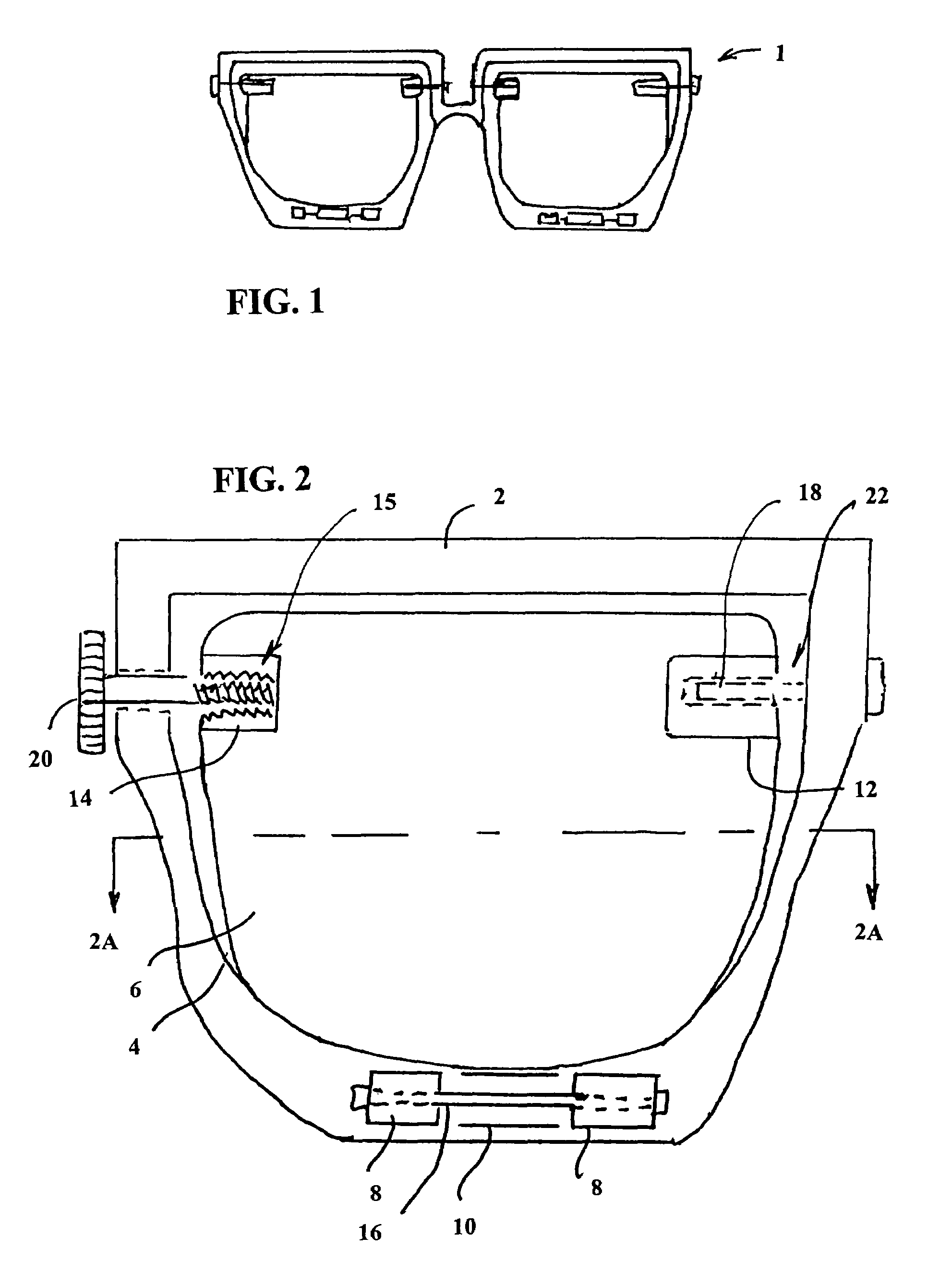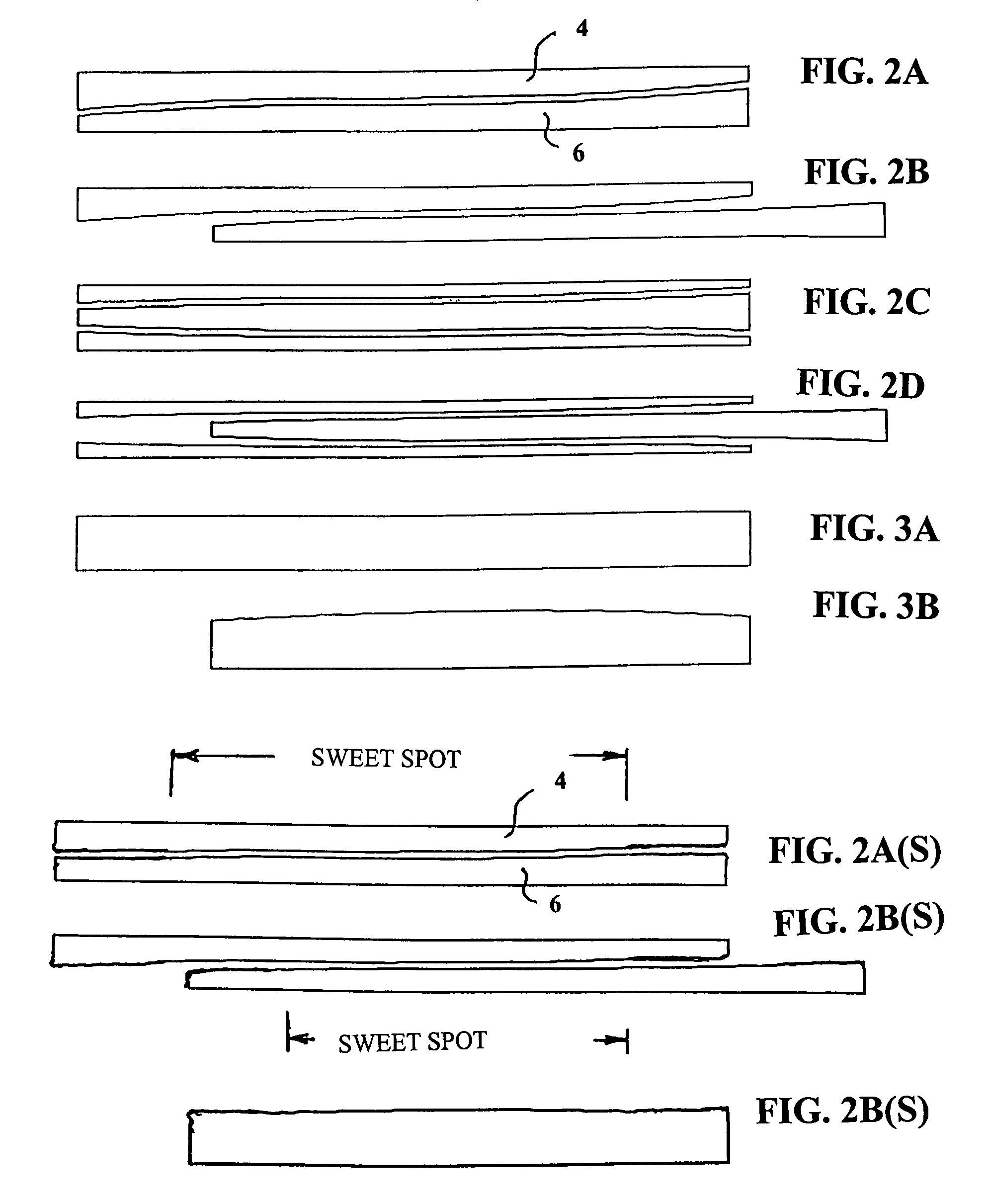Adjustable focus lenses
a focus lens and adjustment technology, applied in the field of adjustable focus lenses, can solve the problems of not detecting residual aberration in the human eye, difficult to focus comfortably at a near distance, and difficulty in clear, comfortable near-distance focus,
- Summary
- Abstract
- Description
- Claims
- Application Information
AI Technical Summary
Benefits of technology
Problems solved by technology
Method used
Image
Examples
first proposed embodiment
[0038]A first proposed version of the present invention is shown at 1 in FIG. 1. This is a drawing of a pair of eyeglasses with wearer operated focusing lenses. This embodiment includes metal or plastic frame 2, two back lenses 4 and two front lenses 6. Back lenses 4 are mounted rigidly on frame 2. A more detailed version of each lens pair is shown in FIG. 2. Front lenses 6 are mounted so that they can be moved laterally with respect to back lenses 4. Two pen mounts 8 are attached rigidly to frame 2 and tabs 10, 12 and 14 are attached rigidly to front lenses 6. Pen 16 passes through pen mounts 8, allowing it to slide through tab 10. Pen 18 passes through frame 2, allowing it to slide through tab 12. Adjustment screw 20 passes through frame 2 and screws into treaded socket 15 in tab 14. Spring 22 between frame 2 and tab 12 provides a compressive force in the direction of adjustment screw 20. The wearer of the glasses shown in FIG. 1 adjusts the focus of each of the lenses by rotating...
specific example
[0040]Applicant has performed ray trace calculations of the sliding lens system to verify that the optical quality is sufficient for eyewear. As an example calculation, Applicant used a pair of optics with one flat surface and one cubic surface. The flat surfaces are on the outside and the cubic surfaces are facing each other such that there is a 0.1 mm gap between the optics when in the null position, with the effect of the cubic surfaces nearly canceling each other out. The optics are assumed to be made of a typical glass with index of refraction of 1.5. The strength of the cubic surface is described by:
[0041]Z=160cm2(x33+xy2)
[0042]The eye was modeled as having pupil diameter of 4 mm, with the pair of optics placed 2 cm in front of the eye. The eye is pointed to look at an object directly in front of the subject, with the center of the eye 3 cm from the centerline of the subject. The eyeball diameter was assumed to be 4 cm. The rays originate at the eye and travel to a plane at...
PUM
 Login to View More
Login to View More Abstract
Description
Claims
Application Information
 Login to View More
Login to View More - R&D
- Intellectual Property
- Life Sciences
- Materials
- Tech Scout
- Unparalleled Data Quality
- Higher Quality Content
- 60% Fewer Hallucinations
Browse by: Latest US Patents, China's latest patents, Technical Efficacy Thesaurus, Application Domain, Technology Topic, Popular Technical Reports.
© 2025 PatSnap. All rights reserved.Legal|Privacy policy|Modern Slavery Act Transparency Statement|Sitemap|About US| Contact US: help@patsnap.com



